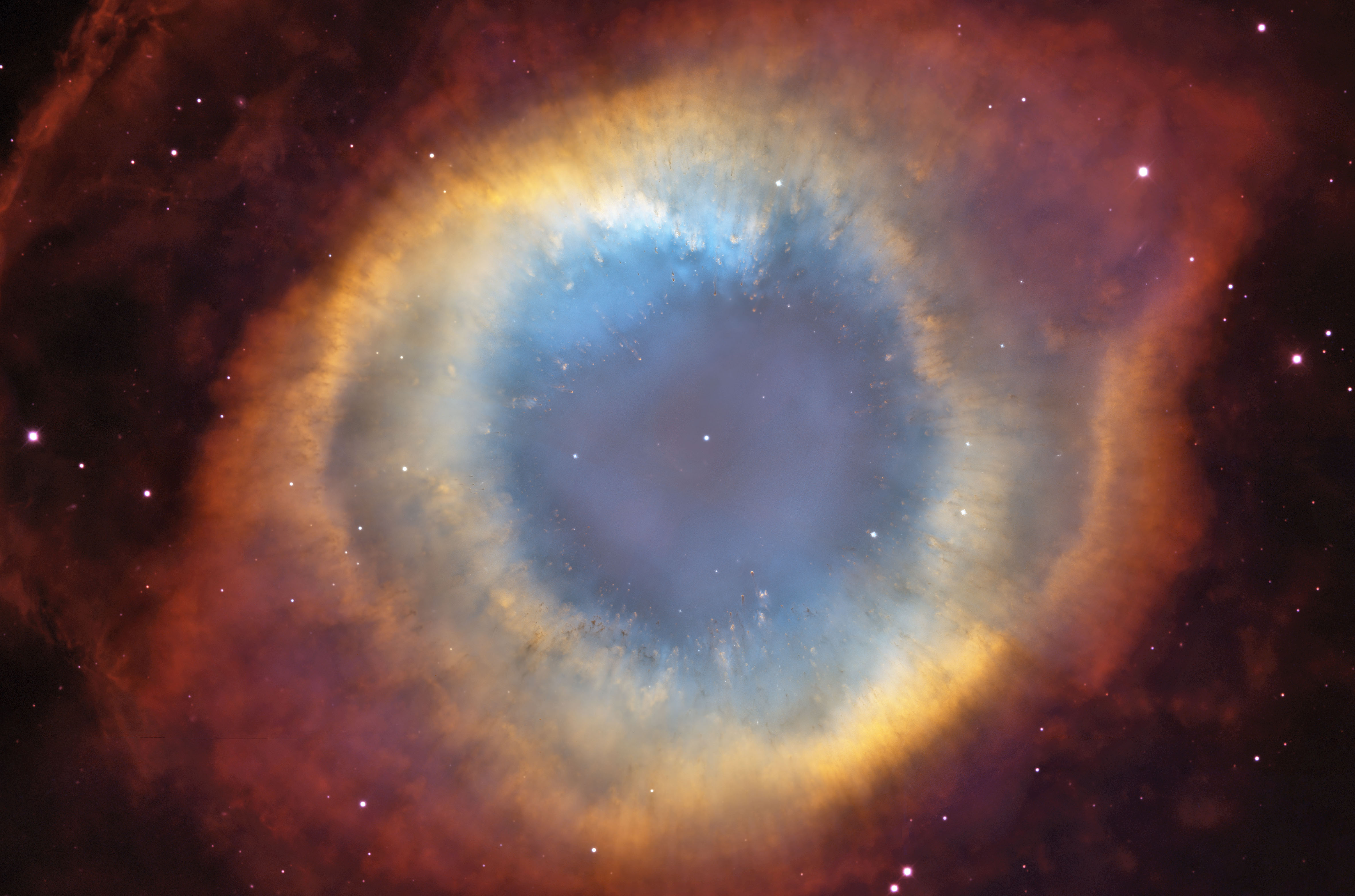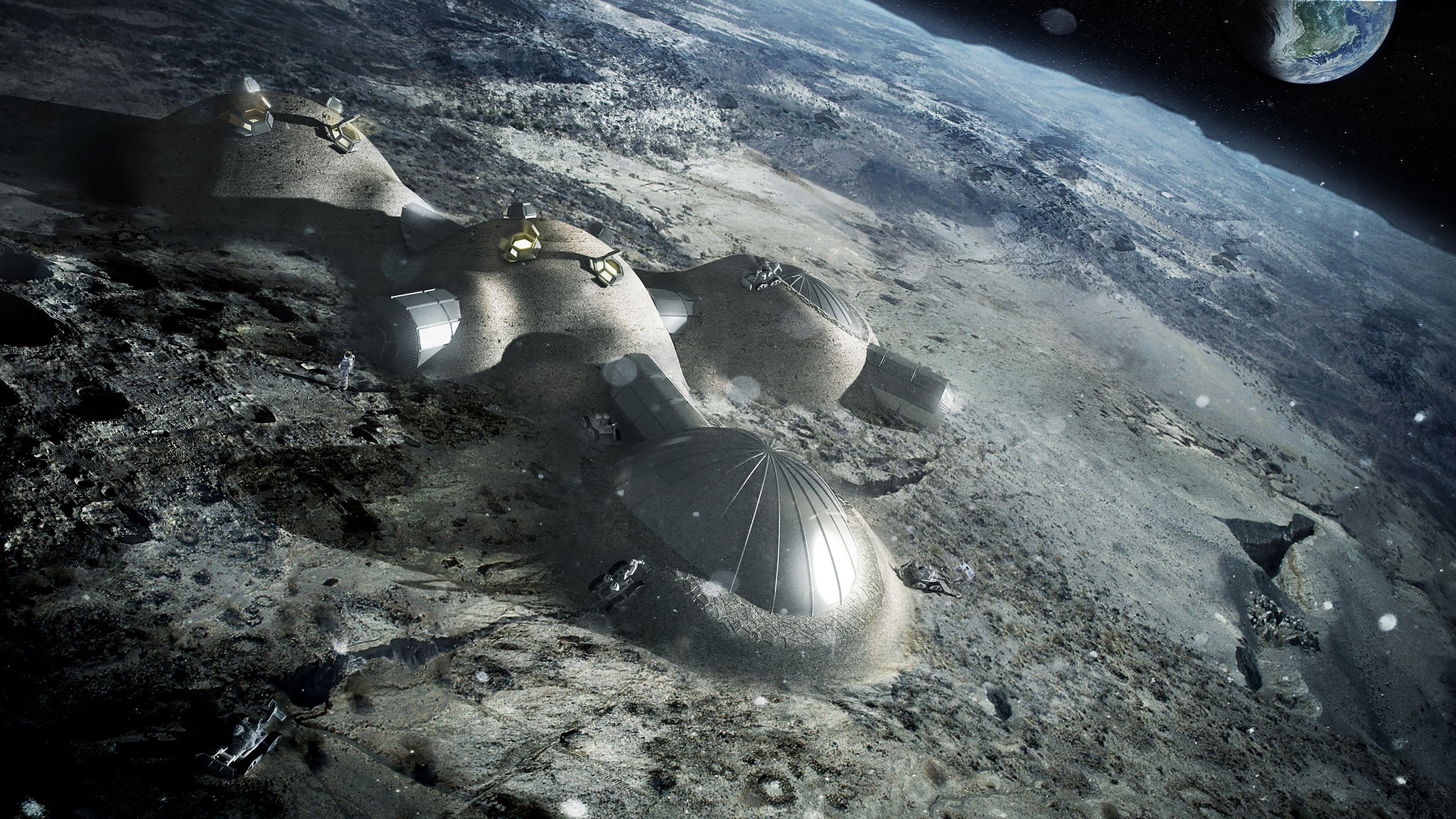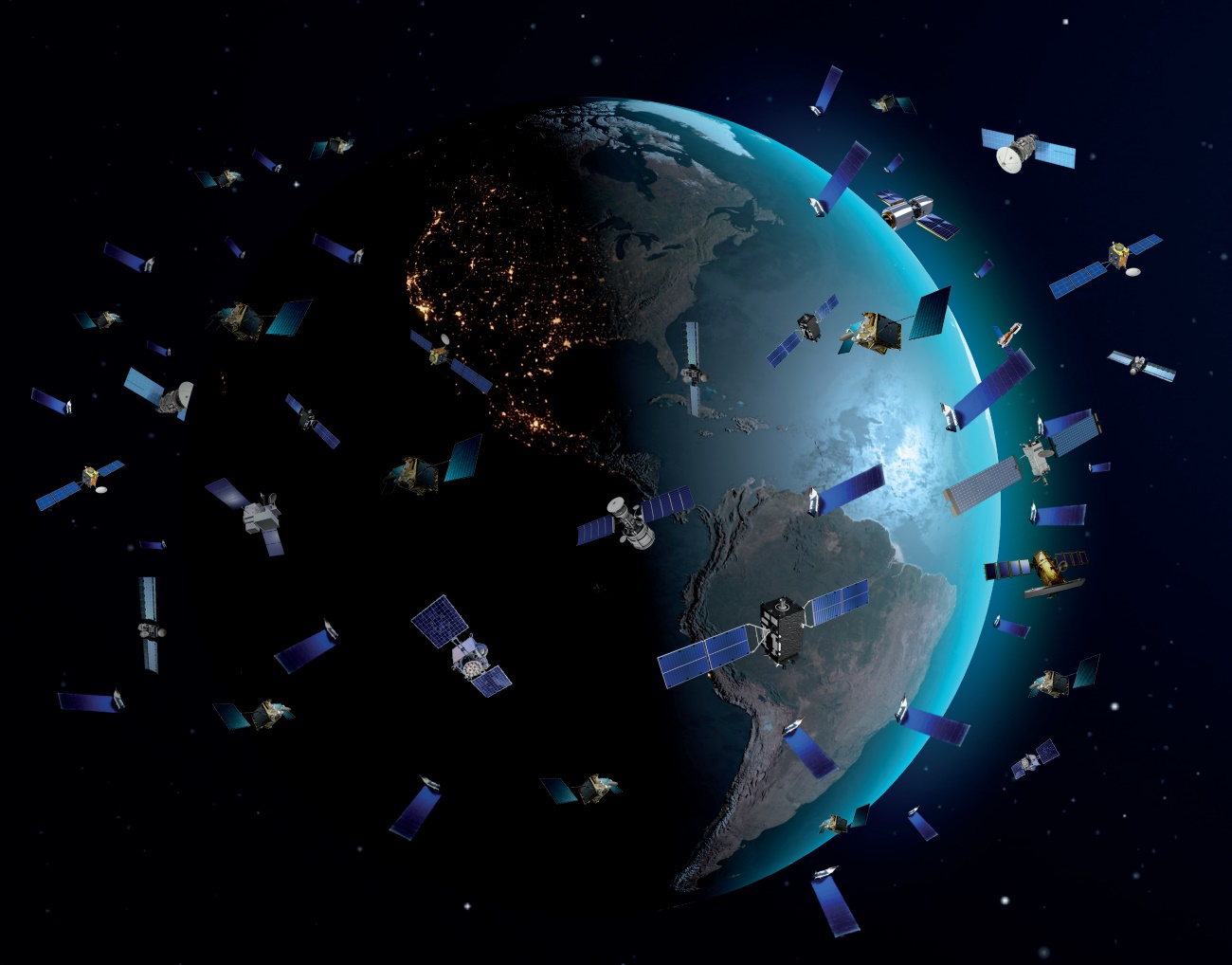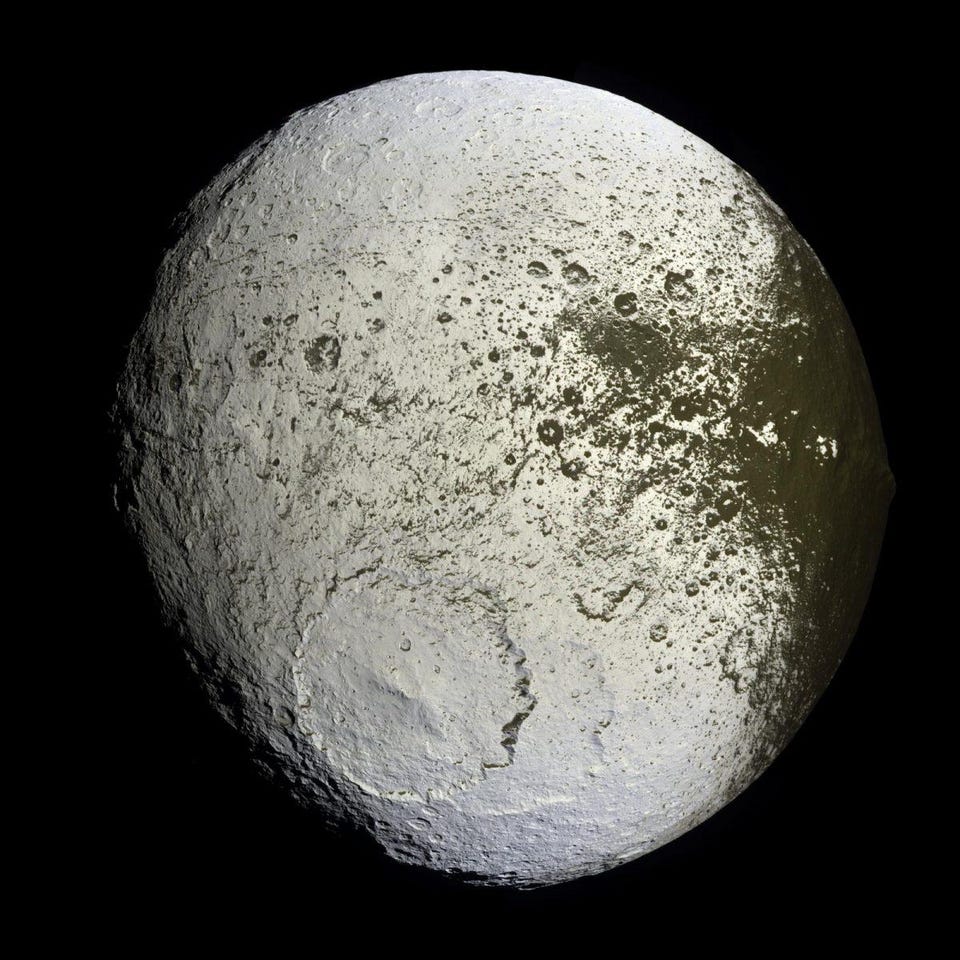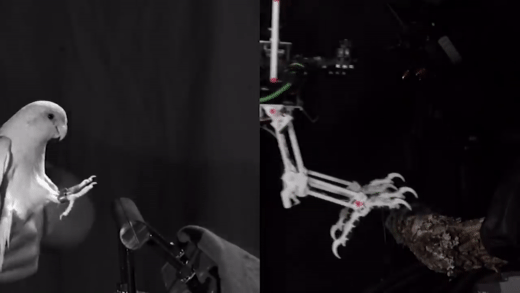How to watch the Geminids: the best meteor shower of the year

- The Geminid meteor shower peaks the night of December 13 and the morning of December 14, 2021.
- With clear skies, the best time to watch is just after the Moon sets.
- You might see up to two or three meteors per minute, making the Geminids the best meteor display of 2021 — even beating August’s Perseids.
Each year, as the Earth orbits the Sun, the same sets of meteor showers recur at the same time annually. The reason is simple and straightforward: As volatile-rich bodies travel through the Solar System, they outgas and fragment when they get too close to the Sun. Over time, a collection of tiny particles get stretched out along the entire body’s orbit, creating a debris stream. A few of these bodies — mostly comets — take the plunge from the outer Solar System and even cross Earth’s orbit. When Earth passes through these cometary debris streams, those tiny particles strike Earth’s atmosphere, burning up in brilliant streaks of light. The resulting spectacle, as seen from Earth, is what we know as a meteor shower.
While August’s Perseids have long been renowned as Earth’s most reliable annual meteor shower, it has been outshone by a new competitor in recent years: December’s Geminid meteor shower. The Geminids are unusual and spectacular for many reasons, including:
- they come from an asteroid, not a comet
- they’ve intensified in recent decades
- their meteors are frequently multicolored
But despite all of this, the Geminids remain underappreciated by skywatchers across the world. On the night of December 13 and the morning of December 14, the Geminid meteor shower reaches its peak. Here’s everything you need to know to enjoy it to the fullest.
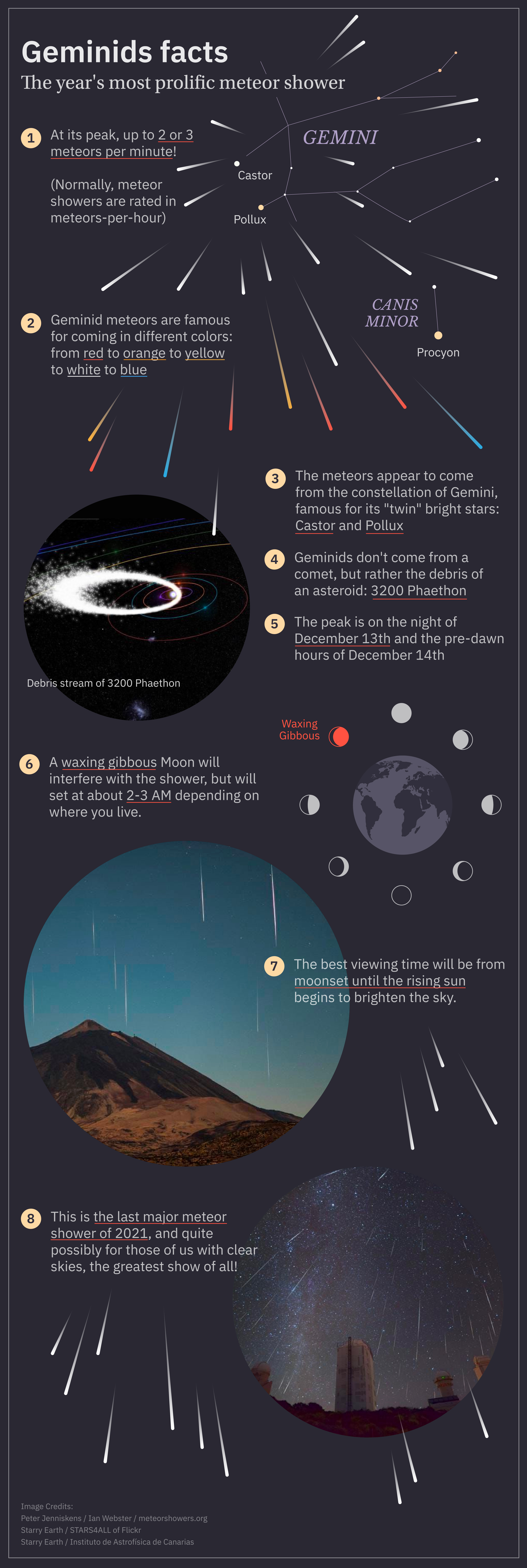
How to watch
One of the best things about meteor showers is that you don’t need any special equipment to view them; your naked eye is actually ideal. While most astronomical events are localized to a single point or a narrow region of the sky, meteor showers create displays that extend everywhere the human eye can see from any point on Earth. In fact, the only thing that’s localized is where the meteors originate from: what’s known as the radiant of a meteor shower.
The reason they’re called the Geminids is because they originate from the constellation of Gemini, which is highlighted by the bright “twin” stars, Castor and Pollux. Perhaps surprisingly, the best location to watch is anywhere other than exactly at the radiant itself, because the meteors will all be traveling away from that location. Instead, the best viewing location is wherever the greatest dark area of visible sky happens to be, and to do it with as wide-field a view as you can obtain. For many, sitting in a reclining chair or even a lounge chair — with blankets and many layers, if appropriate — is the best way to take in as much of the sky as possible.
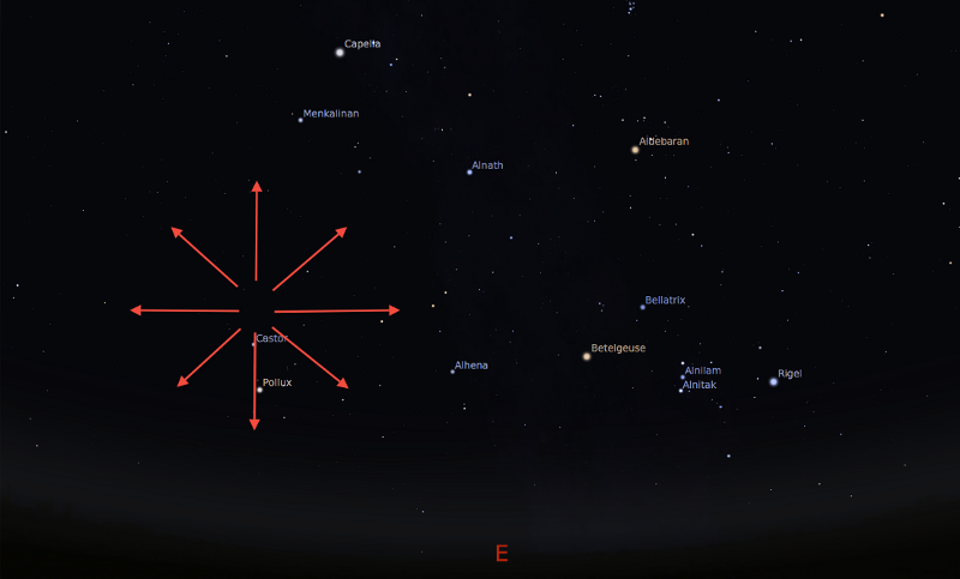
Credit: E. Siegel/Stellarium
When to look
This is a little bit tricky, for three reasons:
- Most of the world is located in the Northern Hemisphere; at this time of the year, it’s difficult to find cloud-free skies.
- The Geminids are prolific, but the meteors they produce are slower moving and less intrinsically bright as a result, so finding dark skies is key, and challenging.
- The Moon is waxing and more than half full — what we know as a Gibbous Moon in astronomy — and will be a major source of light pollution on the night of the peak: December 13th.
The clouds are a roll of the dice. If the weather cooperates, you’ll have a good show, but if it’s cloudy, you’ll have the same experience that many professional astronomers sometimes do of being “clouded out” of your astronomical hopes. The darkness of your skies is something for which you can plan ahead, as we’ve done an excellent job of monitoring where light pollution is most egregious versus where clear, dark skies are. While finding a pristine sky is incredibly challenging for most, the darker your skies, the better you’ll be able to see the fainter Geminid meteors.

(Credit: Stellarium Labs)
The illustration above shows a visual comparison of what the night sky looks like with different amounts of light pollution. The Bortle scale — the dark sky scale used to quantitatively assess how light-polluted an area is — ranges from a completely pristine sky, which is rated “1,” up to the most brightly lit locations on Earth, like New York City, which is rated “9.” If you can find a location where the brightness is “5” or better, you’ll have a show worth watching.
The big difficulty lies with the waxing Gibbous Moon, which can by itself transform a nearly pristine sky into a “7” or even an “8” on the Bortle scale. However, the Geminids are generally best viewed after midnight. On the night of December 13 into the morning of December 14, 2021, the Moon will set between approximately 2 to 3 a.m., depending on your location. If you want the best show that nature can provide, the best hours to view will be from moonset until dawn begins to brighten the sky. With this in mind, a dedicated observer could see upwards of ~400 meteors in the late night and early morning hours of December 14.
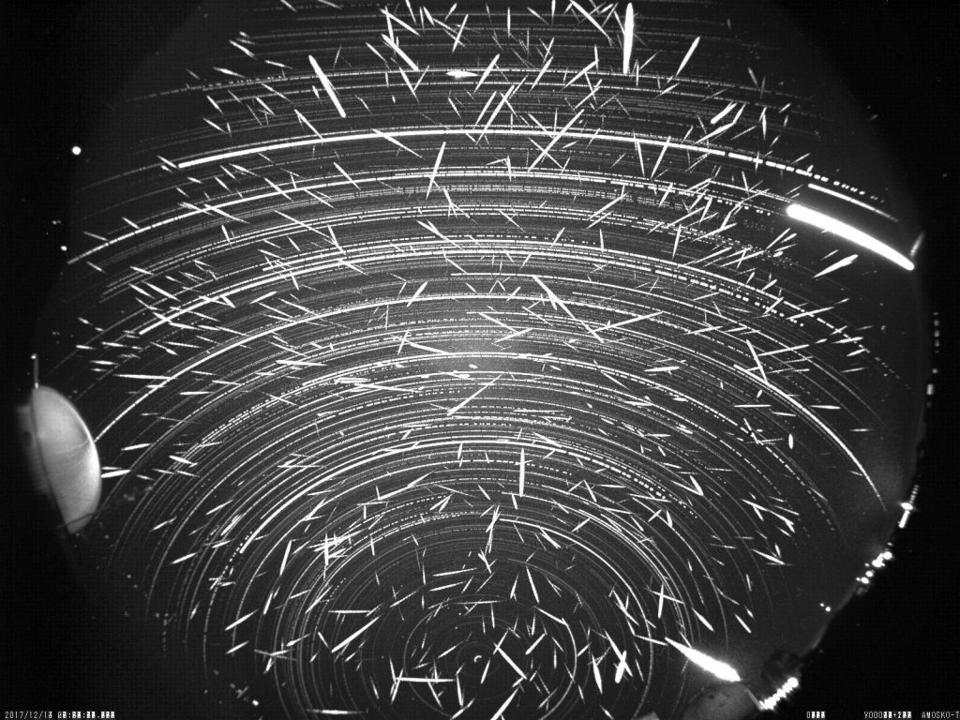
Credit: Juraj Toth, Amos Team
Where do the Geminids come from?
There’s a very popular myth that meteor showers arise from the tails of objects like comets and the volatile-rich asteroids.
This isn’t true at all! Although it is true that comets and volatile-rich asteroids produce tails and that comets and volatile-rich asteroids produce meteor showers, these two facts are not related to each other.
When a comet or asteroid produces a tail, what’s happening is that particles are being heated and accelerated by the Sun. The spectacular sight of a tail, however, is because particles are being pushed away from the parent body itself and also away from the Sun. Importantly, these particles do not wind up in the same orbit as the parent body, meaning that when Earth crosses the orbit of the comet or asteroid in question, it doesn’t hit the particles that have been expelled in either the dust or the ion tail. Moreover, looking at the parent body of the Geminids — asteroid 3200 Phaethon — you can see that it not only doesn’t have a tail, but it also appears to be a relatively quiet body, with no coma or visible debris coming off of it at all.
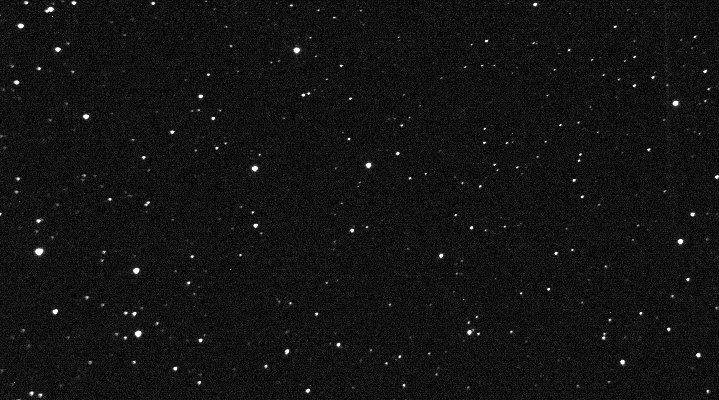
Credit: Ingvars Tomsons/Wikimedia Commons
And yet, from the 1980s to today, the intensity of the Geminids has steadily increase. The past decade of the Geminids has been the most prolific, and with good reason: The density of particles in the debris stream created by asteroid 3200 Phaethon has continued to increase with time. Why?
- It isn’t because of outgassing.
- It isn’t because of a coma or a set of tails.
- It isn’t because of anything orbiting the parent body, or because of volatiles that get boiled/sublimated off of it.
Instead, the reason the Geminids are intensifying is because, as it passes close to the Sun, asteroid 3200 Phaethon experiences tidal forces. Those forces slowly tear pieces of the asteroid apart. While originally a speculative and theoretical idea, infrared observations of the parent bodies of meteor showers have revealed something spectacular: Asteroids and comets fragment apart, bringing small particles of debris along with them. Over time and many orbits, these particles stretch out and fill the entire orbital path of the parent body, ensuring that no matter where Earth crosses it, a meteor shower will ensue.
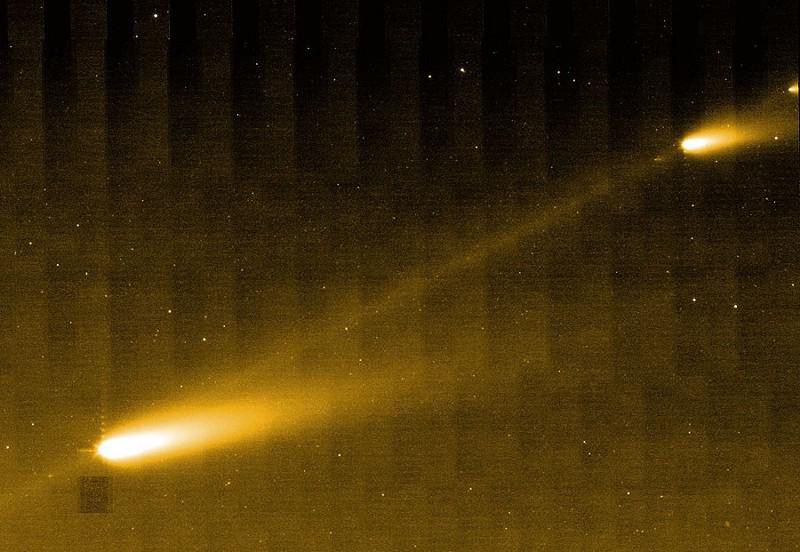
Credit: NASA/JPL-Caltech/W. Reach (SSC/Caltech)
The fact that the Geminids have intensified recently tells us that the parent body is still undergoing this process, and that as Earth charges through the debris stream, it runs through a progressively larger, thicker, and denser stream. While the Gemind meteor shower technically lasts for weeks, however, the peak remains narrowly collimated, meaning that if you want to see the biggest outburst and the most spectacular show, the best time to view it — far and away — is the one and only night of the peak.
Because the constellation of Gemini rises in the east at this time of year and sets in the west, just as the Sun rises, the best location to look, perhaps unsurprisingly, is straight up, directly overhead. Many people get discouraged when attempting to watch a meteor shower because they go outside when the Moon is out, don’t see any meteors for a few minutes, get cold, and conclude it was a bust. But if you know how, when, and where to watch, a truly spectacular show could be your reward.

Credit: Jeff Sullivan/flickr
So, why are the Geminids so special?
Because they come from an asteroid instead of a comet, the particles that strike Earth’s atmosphere can vary in their atomic and molecular composition. As they travel at tens of thousands of miles per hour through the atmosphere, they heat up and undergo chemical reactions. While most Geminid meteors will appear white or yellowish-white to the naked eye, long-exposure photography can reveal some spectacular colors as these meteors burn up in the atmosphere: greens, reds, blues, and oranges.
In 2014, the Geminids had their largest outburst in recorded history, reaching a peak rate of 253 meteors per hour, or more than 4 per minute at the peak. However, just two years later, the Geminids had to compete with a 100% full Moon, drowning out the meteors substantially and resulting in just 25 meteors per hour at the peak. In every other year since 2006, the peak rate has been over 100 meteors per hour, with every year from 2012 onward (except 2016) yielding 2 or more meteors per minute at the peak. The Geminids were only first observed in 1862, indicating that this is a relatively young meteor shower, only coming into existence when the asteroid 3200 Phaethon had a gravitational encounter that recently changed its orbit.
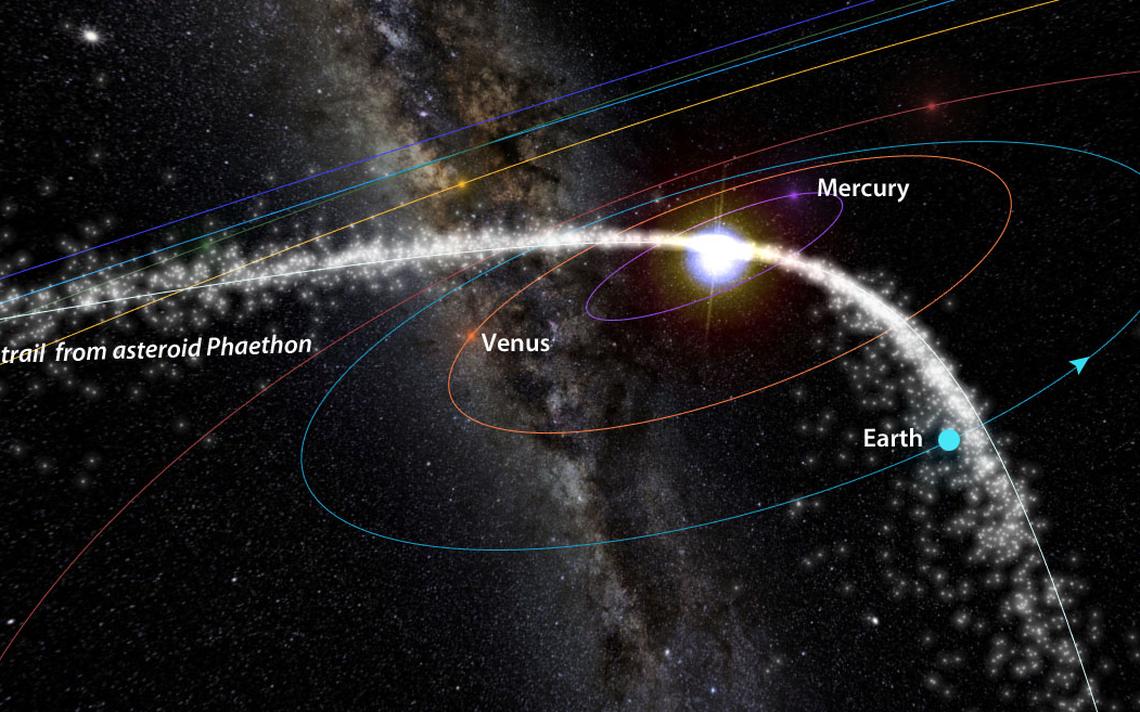
Credit: Peter Jenniskens and Ian Webster
One remarkable piece of science we’ve recently conducted involving meteor showers is use a series of all-sky cameras to image the Geminid meteors — which burn up and disintegrate in Earth’s atmosphere — in order to reconstruct what their orbits were prior to colliding with Earth. As expected, every single one made an ellipse with the Sun at one focus, and every single one crossed Earth’s orbit as well.
However, what you might not expect is that every single one of them possessed an orbit that was consistent with the expected origin of the Geminids: asteroid 3200 Phaethon. There are no outliers among them, as they all struck Earth with approximately the same direction and the same velocity. In fact, the only reason that Geminid meteors appear in different locations in the sky is because the Earth itself isn’t point-like, but is a rather large sphere that moves through space. From the perspective of an observer here on Earth’s surface, they can appear anywhere on the sky. But from the perspective of an off-world observer, every one of these meteors strikes Earth with almost exactly the same orbital parameters: a remarkable confirmation of our theory of where meteor showers come from.
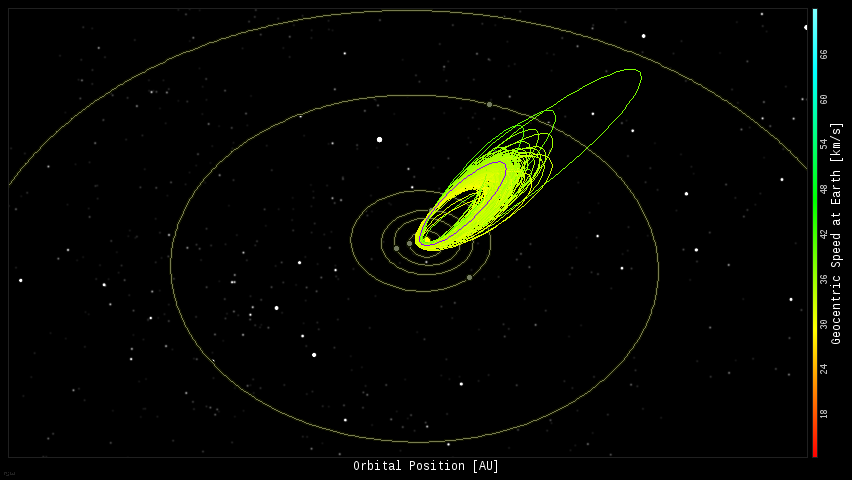
Credit: NASA
The Geminids come just once a year, and while you can definitely see meteors for more than a week on either side of the peak, the best show truly is “one night only” — and really for only about the darkest three or four hours, depending on your location. The best time to watch is after the Moon sets but before the rising Sun begins to brighten the sky on the night of December 13 and the morning of December 14; skywatchers will be treated to multicolored meteors that may be as frequent as two, three, or even four per minute.
A few decades ago, the Perseids were the only reliable meteor shower in town: spectacular year after year regardless of conditions. However, as Comet Swift-Tuttle, the parent body of the Perseids, travels farther and farther from the Sun, the rate of Perseid meteors has slowly but steadily dropped, while the rate of the Geminids has steadily grown. There have been recent years where the Geminids have even topped the Perseids as the leading meteor shower seen from Earth. As 2021 draws to a close, don’t miss your opportunity to see whether the Geminids become the year’s most spectacular meteor shower, and take in one of the most wondrous natural sights the night sky has to offer.

